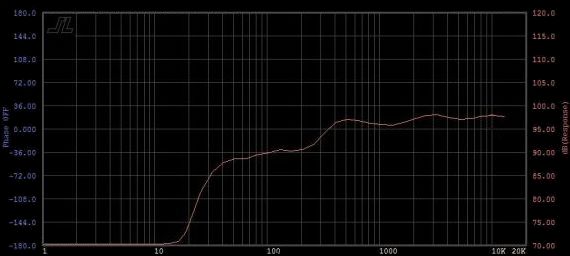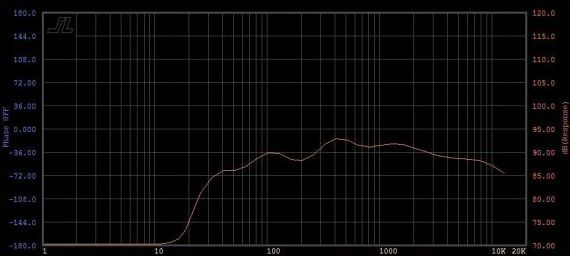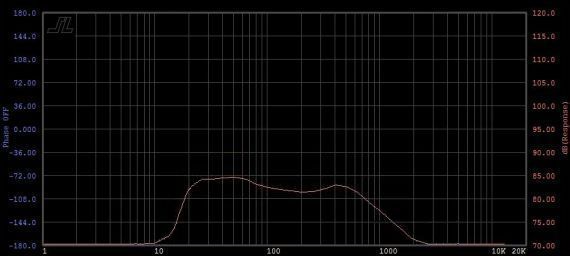| Baffle Step [message #62096] |
Tue, 16 March 2010 11:31 |
 |
 Wayne Parham
Wayne Parham
Messages: 18985
Registered: January 2001
|
Illuminati (33rd Degree) |
|
|
In my opinion, baffle step compensation filters can be useful, but only for a fairly limited number of loudspeaker types. I think they are way overused in the DIY community. BSC filters are best suited for little mini-monitor speakers with small baffles used on stands, radiating into freespace. These kinds of speakers are optimized specifically to improve on-axis response, with little or no attention paid to power response.
If such a speaker isn't used in freespace, if instead it is placed on a bookshelf so there is boundary reinforcement, it can sound bloated in the midbass. Many will say that they shouldn't be used near boundaries anyway because of early reflections, and there is some merit in that argument, however, I think the midbass boost from a BSC filter sounds even more objectionable if it's used in this environment.
The idea of a BSC filter is to increase output at lower frequencies, where the speaker is radiating omnidirectionally. At higher frequencies, where the baffle begins to cause the speaker's radiation pattern to be more forward-facing, SPL is greater because the sound energy is "focused" into half the area. As a result, the BSC filter gently reduces energy in this region. Of course, this design approach assumes the loudspeaker radiates omnidirectionally at low frequencies to begin with, which is usually a safe assumption for direct-radiating drivers on a baffle, in a purely anechoic environment (like outdoors), but it doesn't take into account other factors that modify directivity such as boundary conditions, room modes, horn pattern control or directivity changes from any other causes.
Another problem with BSC filters is they generally only seek to address the overall amplitude difference between low and high frequencies, without dealing with the ripple in the transition region. Baffle step is caused by edge diffraction just like horn waistbanding is caused by mouth edge diffraction. They're the same thing. So just like the beamwidth of a waveguide/horn doesn't widen perfectly smoothly as frequency drops, the radiation angle of the loudspeaker doesn't increase perfectly smoothly from 180° to 360° below the baffle step frequency either. It goes through a transition region where it actually narrows briefly before it widens. Likewise, in this region, on-axis SPL rises before it drops. But of course, the power response remains unchanged, because this is an acoustic feature, one that modifies directivity rather than acoustic power.
When designing uniform-directivity loudspeakers, one should avoid the temptation to optimize on-axis response using electrical filters to modify what is entirely an acoustic matter, because this tends to only improve the amplitude response on a single axis at the expense of all others, actually worsening the power response. In truth, the relatively small on-axis ripple created from the baffle transition is probably better left alone in a uniform-directivity loudspeaker, because this leaves power response intact.
Some say a picture is worth a thousand words, so let's add pictures to illustrate:
The response curve shown below is of one of our larger DI-matched two-way speakers, measured in freespace. It is a good representation of all our DI-matched two-way models, and is what you would expect if they were used outdoors, flown high off the ground with no boundary reinforcement. If you compare this with our published halfspace measurements, the baffle directivity transition is easy to see:
 DI-matched two-way loudspeaker on-axis, measured in freespace
DI-matched two-way loudspeaker on-axis, measured in freespace
You'll notice that below 300Hz, SPL is reduced by 6dB having the characteristic "baffle step" shelf. Many designers would point to this and immediately suggest a baffle-step correction circuit. If used outdoors or in a really large room, I might be inclined to agree. But then again, if used outdoors or in a really large room, I'd probably opt for a larger baffle and subs to cover the range. The point is, what we see here is on-axis response shows less output below 300Hz because the baffle constrains the radiating angle above that point. That's the key - This is a directivity shift, not a reduction in acoustic power.
Look at the same speaker rotated 45°, again, measured in freespace:
 DI-matched two-way loudspeaker rotated 45°, measured in freespace
DI-matched two-way loudspeaker rotated 45°, measured in freespace
Notice that off-axis energy is reduced at higher frequencies, but not at the lowest frequencies, where radiation is omnidirectional. If we were to have installed a baffle compensation circuit, the bass would be louder than the midrange and treble.
As we rotate further, passing the baffle angle, out to the side and around to the back of the speaker, the treble is completely lost and all that is radiated is the bass and lower midrange. So at these angles, a baffle correction circuit makes the spectral balance even worse.
 DI-matched two-way loudspeaker rotated just past 90°, measured in freespace
DI-matched two-way loudspeaker rotated just past 90°, measured in freespace
Some say this doesn't matter because the listener isn't ever going to be in those positions but that discounts the very important aspect of the spectral balance of the reverberent field. Indoors sound is not just direct, but a combination of direct and reflected sounds, and this is even more the case at low frequencies where most of what you hear is combined direct and reflected energies.
This is one of the reasons why the constant directivity cornerhorn approach is so attractive. All energies are thrown forward - There is no omnidirectional radiation because the walls constrain the pattern and limit the beamwidth to 90°. There is no "baffle step" and sound is constant throughout the room. Of course, room modes still setup but these can be mitgated using a multisub setup. But above the modal region, the sound radiation is constant and the spectral balance is uniform throughout the room.
Speaking of room modes, also consider the fact that low frequencies - the region that BSC seeks to boost - is where directivity becomes somewhat ambiguous due to room modes. Essentially what BSC attempts to do is to provide equalization for collapsing directivity in a region where directivity gives way to a modal structure. Room modes fracture the pattern, making it impossible to effectively equalize. So knowing this, it makes more sense to address the problem another way. Don't boost the main system's woofer output with a BSC filter but rather smooth out the modes with multiple subwoofers.
In other words, baffle step response is a symptom of just one form of directivity change, and to focus on it solely is very short sighted, in my opinion. If you want to focus on directivity in a design, then do so, but not with a filter designed to fix one symptom of collapsing directivity in a single frequency range. Instead, work on making directivity constant, or if it must change, at least make it change gradually and uniformly.
To me, BSC filters only make sense when the baffle-induced directivity transition happens in the midrange, above 300Hz or so. This pretty much limits BSC circuits to speakers with baffles smaller than about a foot or a foot and a half. The reason for this is, as I said in the preceding paragraphs, below 250Hz, you're in the room's modal region and directivity loses its meaning.
It may make some sense to incorporate a filter to make on-axis response flat where collapsing directivity has boosted midrange, but it makes no sense to do this below the Schroeder frequency. The room modifies directivity in the modal range, so even if a calculator "tells" you to expect baffle step at say 300Hz, you shouldn't.
The bottom line to me is baffle step is a result of directivity change. Baffle step compensation filters shouldn't be installed on every speaker. One should use care when putting BSC filters in crossover designs, and not assume every loudspeaker needs it. Think of what you're trying to accomplish, and whether or not BSC makes sense. If you are building a physically small monitor speaker, it might. But if the baffle is large, and especially if the speaker is intended to provide controlled directivity, then a BSC filter probably isn't your best choice.
|
|
|
|







